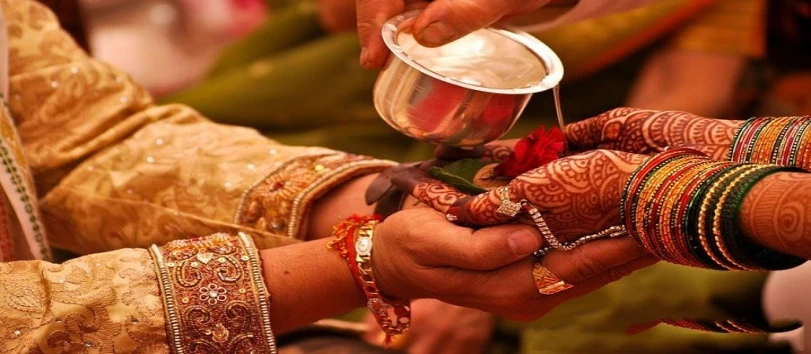
Know More About Gujarati Wedding
Gujarat is a state with a variety of cultures, and Gujarati weddings incorporate that diversity beautifully. Gujaratis brilliantly represent Indian ancestry via their customs, ceremonies, and traditions. Le Magnifique Events will help you to bring special color to all the Gujarati wedding rituals if you are planning to make your daughter be elated during her wedding rituals.
Welcome to Gujarat, a gem on India’s western coast where tradition, culture, and tourism converge to offer an enriching experience for every traveler. This vibrant state is not just a geographical entity; it’s a living tapestry woven with threads of history, artistry, and natural beauty. In this blog, we’ll take you through Gujarat’s enchanting traditions, its rich cultural heritage, and some must-visit tourism attractions that promise to captivate your senses.
They say matches are ‘’made in heaven,’’ however, we bring that heaven to earth for you. A Gujarati wedding lasts for three to four days, and each day has special significance in terms of traditions and customs. Each ceremony’s attire is well-established. We shall discuss Gujarati wedding rituals in great detail today. We will also go over appropriate dress codes for each day. This blog will take you on a wild ride through the gorgeous, wealthy, tradition-filled, and incredibly fun Gujarati wedding.
Tradition: The Heartbeat of Gujarat
Gujarat is a state where traditions are not just celebrated but lived and breathed. One of the most spectacular demonstrations of this is the festival of Navratri. Celebrated with immense fervor, this nine-night festival is dedicated to the goddess Durga and features vibrant dance forms like Garba and Dandiya. Picture a sea of colorful costumes, rhythmic clapping, and twirling dance moves that reflect the state’s joyous spirit.
Gujarat’s culinary tradition is another vital aspect of its cultural identity. The state’s cuisine is predominantly vegetarian and offers a delightful array of flavors. Dhokla, a steamed fermented rice and chickpea batter, and Khandvi, a spicy rolled snack, are popular choices. Don’t miss out on sweet treats like Shrikhand, a yogurt-based dessert, and Mohanthal, a sweet made from gram flour and ghee.
Craftsmanship in Gujarat is a testament to the state's artistic prowess. Traditional crafts like Bandhani (tie-dye) and Patola (silk weaving) are not merely artisanal but are integral to the state’s cultural fabric. The Kutch embroidery, known for its vibrant colors and intricate designs, speaks volumes about Gujarat’s rich textile heritage.
Culture: A Kaleidoscope of Art and Heritage
Gujarat’s cultural landscape is as diverse as it is rich. The state is renowned for its folk dances and music, with Garba and Dandiya Raas taking center stage during festivals. These traditional dances are not just performances but communal celebrations that foster a sense of unity and joy.
The state's art and architecture are equally captivating. The Sun Temple in Modhera stands as a majestic example of ancient architecture, with its elaborate carvings and unique design. The Rani ki Vav (stepwell) in Patan is another architectural marvel, known for its intricate sculptures and historical significance.
In the realm of language and literature, Gujarati is the predominant language, and it has a rich literary heritage. The works of poet Narmadashankar Dave and novelist Jhaverchand Meghani are celebrated for their contributions to Gujarati literature, reflecting the state’s intellectual and artistic depth.
The first and foremost ritual in a Gujarati wedding is the custom of Chandlo Maati. This custom has its roots in acceptance. In this ceremony, four male members from the bride's side, along with the bride's father visit the groom's house in order to apply a red-coloured circle on the groom's forehead.
According to the Chandlo Matli custom, the groom and four of his male family members visit the bride's house. The bride's father applies the red Chandlo to his forehead, gifts him token money, and blesses him. On this occasion, the wedding date is also fixed among the two families.
In Gujarati weddings, the couple goes around the fire four times. They represent dharma (righteous path), earn artha (wealth), experience kama (love), and attain moksha (liberation) respectively. Sikh weddings, too, have four pheras.

Related Posts